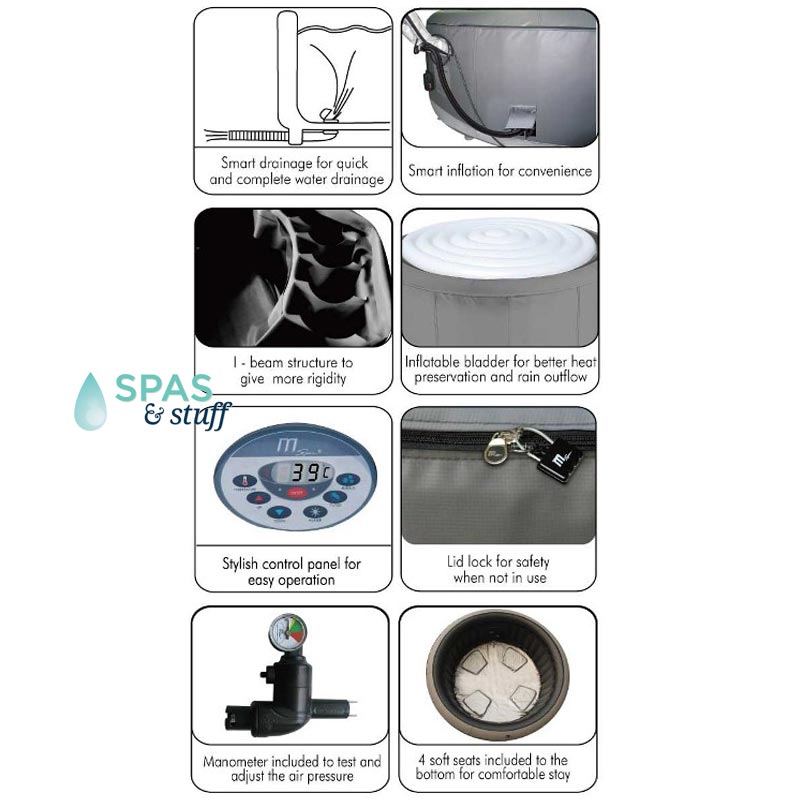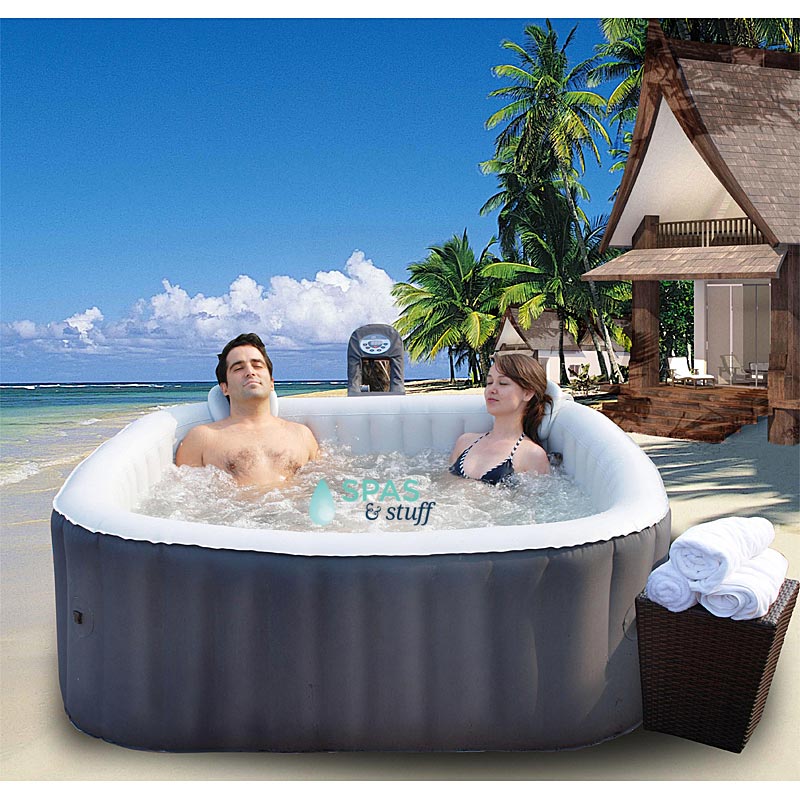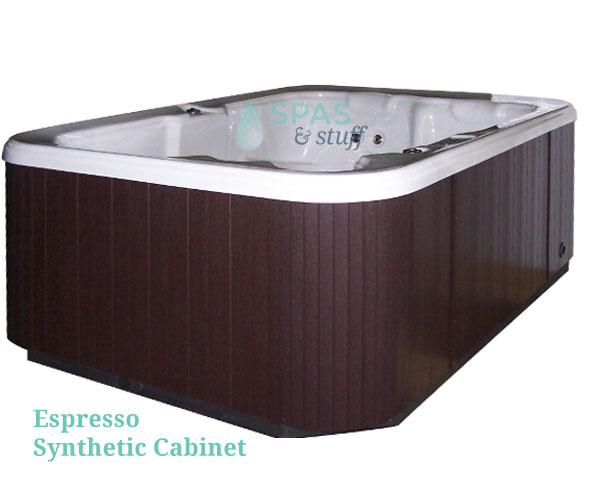
PLAN AHEAD FOR STRENGTH AND SAFETY
Wherever you decide to place your hot tub, you need to make sure that the location has a solid foundation. The foundation must be uniformly firm and provide a level setting. The recommended foundation is a concrete pad with a minimum thickness of 4 inches with steel-reinforced cross bars throughout.
When installing your spa on a wood deck or balcony, the same load requirements must be met. The total load may be as much as 90 pounds per square foot. Remember that your tub weighs about 700 pounds on its own. After you add water and people, it could have a total weight of up to 4,000 pounds.
Regardless of the location that you decide on, you need to be sure that the hot tub is not within 10 feet of overhead power lines and that you leave access to the internal equipment.
In order to perform maintenance or make a needed repair, you will need adequate space to reach the internal components. If your tub has external equipment, you need to know that most city codes require the equipment to be at least 5 feet from the tub unless they are separated by a permanent solid barrier.
CONSIDERATIONS FOR INDOOR PLACEMENT
If you decide to place your hot tub indoors, you need to understand that moisture will accumulate. The steam created by the tub must go somewhere, and it will leave moisture on your walls, ceiling, floor, etc. You need to make sure that you have really good ventilation. The amount of moisture will vary according to how frequently you use the tub.
Ventilation not only helps dissipate the moisture and steam, but it also allows the hot tub chemicals to be circulated out. The odor of the cleaning components can accumulate indoors and even create electrical problem unless the area is well ventilated. The good news is that if you place your hot tub indoors, it will probably stay cleaner and require less frequent chemical treatments.
Big tip on installing a hot tub indoors: you should have some kind of drainage system in place! Experts recommend you change the water in your tub every four months or so. You always have the option of running sewage drains to your hot tub, and if you are placing your hot tub on an existing slab you will need to dig up the concrete to build your drain system.
Another option that is a little less of a hassle would be to get a small submersible pump. You can use the pump to push most of the water out of the tub, but pumps usually fail to move the last inch or so of water at the bottom of the tub.
Some manufacturers build their hot tubs with a water hose connection inside of the cabinet at the bottom of the hot tub. This will enable you to hook a water hose to your hot tub so that you can easily drain the water and move it to another drain or outside on the ground.
ADDITIONAL TIPS
No matter how well made your hot tub is, it is always possible that after years of usage leaks will occur due to worn gaskets or seals. That water must have a place to go. Be prepared to deal with this if the situation arises.
Another thing to consider is that you have to get the hot tub into your house. Measure to make sure that you have enough room to get it into your house and then measure again. After you do that, measure once more!
Many companies suggest that you spend the money to have a licensed contractor make sure that the local building codes and load requirements can be met.
OUTDOORS AND UNDER THE STARS
For many people, outdoors is the best location for a hot tub. Outdoors, there are fewer concerns for the tub. You do not have to worry about the steam and humidity or the chemicals affecting your home. Locating your tub outdoors, though, does mean that you may have to get a concrete pad laid down so that it has a proper foundation.
Outside it will get dirtier more easily. Walking to and from the tub, your feet will get dirty and that will get in the water. Leaves and such may end up in your new hot tub.
A cover is very important when placing a tub anywhere, but it is especially important when placing it outdoors. Always have a cover on the tub when you are not in it. This is a safety measure to prevent small children from falling into it and it also helps it to stay cleaner. The cleaner the water stays, the less frequently you have to treat the water with chemicals.
There are a wide variety of pictures of hot tubs on the Internet being placed outdoors in very creative ways. If you want to invest the money, a stand-alone deck can be built that encompasses the tub. The only limit here is your imagination and your budget.
PLACING YOUR HOT TUB IN A SCREENED-IN ROOM
Putting a hot tub in a screened-in porch mostly resembles an outdoor installation. You have to consider some of the factors that go with both indoor and outdoor installations, though. A screened-in porch will obviously allow for ventilation and the steam and humidity will not harm your walls. You will still need a drain put into the floor of the porch if one does not already exist. If the manufacturer uses the water hose connection, this will not be an issue for you.
Again, you can find many creative pictures of hot tubs installed in screened porches on the Internet.
IN CONCLUSION
In the end, the placement of your new hot tub is completely up to you and your preferences. No matter where you decide to put it, be sure to plan ahead. The more you plan ahead, the easier it will be to install and to enjoy.
If you are not sure whether or not your chosen location is suitable, you should seriously consider contacting a licensed contractor.
Finally, always take into account safety factors when deciding where to put your hot tub. As stated before, a cover should always be in place when it is not in use. Also consider the surface that you will be walking on when going to and from the hot tub. If the path is smooth concrete you may want to put some mats down to prevent slipping.


















